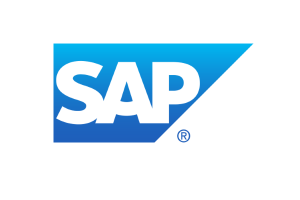Published on the 17/03/2014 | Written by SAP

AT A GLANCE
- Environment Protection Authority Victoria
INDUSTRY
- Public sector-environmental protection
BUSINESS OBJECTIVE
- Provide a single location for capturing and accessing client information.
- Streamline and improve decision-making.
- Provide public access to clients’ environmental performance records
SOLUTION
- SAP CRM, SAP Business-Objects, SAP Portal and Investigative Case Management, part of SAP Urban Matters.
THE BENEFITS
- Instant access to all client interactions.
- Better, more efficient decision-making.
- Platform for providing public online access to environmental performance information.
FOR MORE INFORMATION
SAP
P: 1800 287 727
E: info.australia@sap.com
E: info.newzealand@sap.com
W: www.sap.com/australia
Environment Protection Authority Victoria has improved its decision-making by centralising client information and streamlining processes with a tidy CRM…
As evidence that Environment Protection Authority (EPA) Victoria is doing a good job, seeing state capital Melbourne declared the world’s most liveable city three years in a row is pretty hard to argue with.
However, it wasn’t always that way, says authority strategy and support director Jason Borg. He says implementation of a customer relationship management system after a 2010 review of information practices has lifted EPA Victoria’s game.
And he acknowledges there’s more to the Economist Intelligence Unit’s city liveability ranking than EPA Victoria’s contribution. “The environment is just a small part of it,” he says. Nonetheless, Melbourne can feel pretty happy with the state of its atmosphere and waterways, for which EPA Victoria has statutory responsibility.
“We have very good air quality and our bay is quite clean for a city of four million people,” Borg says. “The iconic Yarra River, as muddy as it appears, is also in reasonable health – coming second in the International RiverPrize – a prestigious environmental award in 2011.”
Now, at least, the authority is equipped to do something about it. EPA Victoria issues licences for a range of environmental activities at 700 sites and has a regulatory role at several thousand other sites that have non-licence compliance obligations.
Information misfires
The authority’s 350 employees deal with 17,000 organisations and capture about 400,000 pieces of data. But before it adopted SAP CRM, EPA Victoria’s left hand often didn’t know what its right hand was doing.
“We were finding it was difficult to access our own information in our decision-making. This was either because we weren’t capturing the right information or our systems weren’t talking to each other,” Borg says.
The authority had numerous systems ranging from five to 20 years old, including bespoke applications and internally developed databases and spreadsheets. As a result it was difficult to see the process flow through the organisation. “That was a big part of the challenge. We just weren’t disciplined enough to capture information and the system wasn’t helping us to do that.”
Borg says some of the authority’s clients were happy to take advantage of the situation.
“Some companies might deal with us over several statutory instruments and we weren’t able to get an organisational view of our interactions with them. One part of the organisation could be unaware of the same regulated entity’s dealings with another part of the organisation.
“We found some less scrupulous clients would shop around for advice on what they had to do to comply with a licence — if they didn’t like one answer they might ring someone else in the team to ask their view.
“Our officers weren’t able to see what had already been discussed with the client because there was no central repository for us to record interactions.”
SAP CRM closes that loophole by assigning every client an account into which all activity is recorded.
“Now if we get a call from company X, we go into SAP and call up the company and we can see every contact it has had with anyone in the organisation, including what advice has been given to it.
“It means we have much more transparency internally about what we’re saying to the outside world. We have a single source of truth for each account.”
A natural fit
Data from nearly 60 business processes is captured in the CRM system. As the phased implementation has proceeded, legacy data has been cleansed and ported to the system.
Borg says when the organisation went to tender, it didn’t specify a CRM system. But because it was looking for a client-based system with everything revolving around the client account, a CRM was the logical platform.
“We laid out our requirements to our technology partner NTT DATA Business Solutions and they presented SAP CRM as the best fit for the model, demonstrating that it provided the best and most robust solution from a cost-benefit perspective. And confidence in the brand also persuaded us to go with it.”
“SAP CRM means we have much more transparency internally about what we’re saying to the outside world.”
Jason Borg, strategy and support director
Added bonuses
The implementation, undertaken by NTT DATA Business Solutions, comes under SAP’s Urban Matters programme, which applies the company’s technology to city management.
“An upside is greater community transparency, allowing the public to look online at licences, notices and so on. They couldn’t do that before because our systems were too messy.”
A business portal gives clients access to their information and a community portal is under development for publicly available information.
“We’re big on being as transparent as possible and SAP enables that. We’re trying to put the onus on clients to be responsible for their environmental performance, and by putting that information into the ether, people will be able to make their own assessment without us being the arbitrator.”
If that’s something new for the public to get used to, the system also demands change from EPA Victoria’s staff, Borg says, who have to be disciplined about recording client dealings.
“I’m careful not to paint too rosy a picture about the implementation because, although it’s been successful, it requires a lot of change-management. It’s not as intuitive as a bespoke system that you’ve been able to design for yourself.”
But the pay off is clear.
“The ability to follow processes across the organisation is a huge benefit. Historically there was no transparency between the start and end points of different processes, whereas now you can see all of that.
“We’re also collecting more information, although we’re yet to harness all the upside of that. That’s our next focus: using that information to generate good reports so you can make better decisions into the future.”
FURTHER READING
About This Vendor
More Case Studies

Chorus transforms billing engine
Partnership with Zag delivers a fit-for-purpose billing system, independent from Spark…

Ballance Agri-Nutrients maps path to increased revenue
Driving business performance and sustainability on the connected farm…

Road mapping the way to digital transformation
Two years into executing its digital roadmap, Ballance Agri-Nutrients is globally recognised with the ‘Best Run’ SAP Innovation Award…

Choosing a future-proofed foundation for growth
Improving system performance and production planning in forestry with SAP HANA and Cloud…

How DOC mobilised their in-the-field asset management
DOC has become the first to implement BlueWorx, a world-class Mobile Asset Management solution by Zag, taking them a step closer to making New Zealand the greatest living space on earth…




























